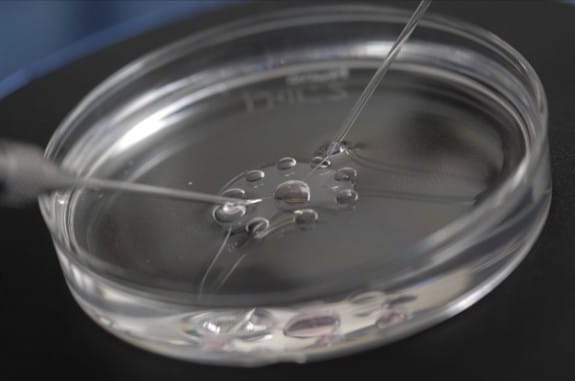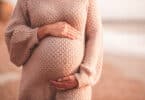Approximately 1 in 8 couples struggle with getting or sustaining a pregnancy. Many of these couples turn to in vitro fertilization (IVF) in order to conceive. Unfortunately, most couples need numerous cycles in order to achieve a successful pregnancy, which can be both financially and emotionally taxing. A new study believes it may have an answer that can help cut back on both.
In their Biomicrofluidics published study, researchers from National Tsing Hua University and the National Health Research Instituted in Taiwan explained that embryos are often “pooled together” in tiny drops of fluid known as micro drops prior to implantation. While this is effective for culturing the embryos, the viability of each one cannot be determined with this method.
Chihchen Chen and her colleagues developed a new method, otherwise known as the “microwell system.” This system gives each of the embryos their own environment, giving lab technicians the ability to better assess each embryo to determine its viability.
“Embryos are very sensitive to their environments,” Chen told Medical News Today. “Understanding the microenvironment of embryos allows us to promote the growth and minimize the epigenetic manipulation of the embryos.”
Chen and colleagues used highly effective high-resolution time-lapse image monitoring to study the embryos. They found that, even when cultured in tiny microwells, the embryos successfully developed to the blastocyst stage. Researchers were also better able to predict the likelihood of each embryo reaching this stage by analyzing the length of time it took each embryo to reach the 4-cell and 8-cell stages. This, in turn, allowed them to screen and select the most promising embryos for transfer.
The researchers hope that, soon, they will be able to use their newly created technique in humans. They believe that the fewer cycles, a lower number of eggs needed, and better monitoring should transfer a lower cost to patients while also greatly reducing stress.
“It would lower the stress level of patients greatly if the number of IVF cycles and embryos transferred can be reduced while maintaining a promising outcome,” Chen said.
However, the conditions will need to be optimized for human embryos and validated first.
Related Articles:







